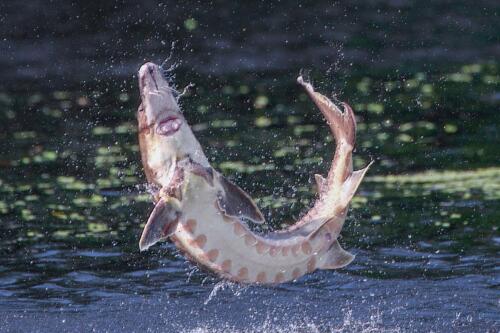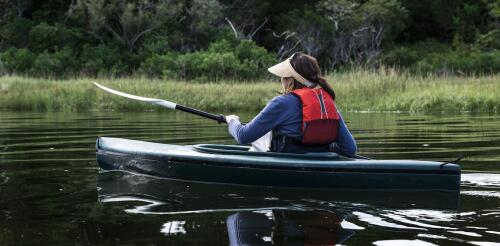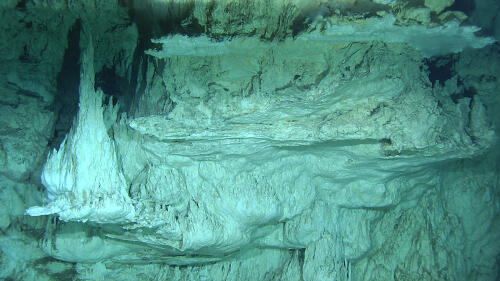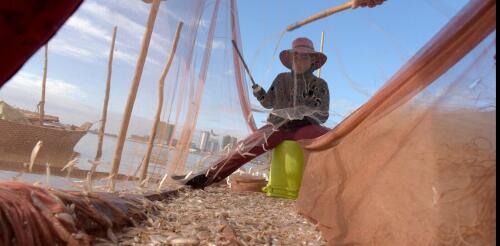Nature
A fish species that hasn’t been seen since the late 19th century was reintroduced to its habitat. According to Nature World News, the Atlantic sturgeon disappeared from its home in the Göta älv River in Sweden due to pollution and overfishing. The fish is now swimming in the river because of conservation efforts from the Swedish Anglers Association, the Museum of Natural History in Gothenburg, and several universities. This conservation effort will gradually introduce the species once a year over the next 10 years to ensure there will be a population that can support itself. One hundred juveniles transferred from a German farm have been released into Göta älv to start the project. Project manager Linnea Jagrud said, ‘This is a fantastic start.” The sturgeon is expected to benefit the river’s ecology because it eats material at the bottom. In addition, the fish oxygenate the riverbed’s sediment, whi...
Climate change has been in the news for more than 40 years. It’s typically covered as a scientific or political issue. However, social scientists like me have found that feelings and values are what drive people toward broad, collective change – not charts, graphs or images. Surveys confirm that the majority of Americans now believe that climate change is real. But many adults seem to feel too exhausted, defeated or powerless to do anything about it. I am leading a large multiyear research project funded by the National Science Foundation that examines how to tap into morals, ethics and spirituality to create enduring behavioral shifts on this issue. In the pilot study for this project, which has not been published yet, we recently surveyed 275 U.S. adults to understand their relationship with and feelings toward the natural world. This is a first step toward understanding how to start communicating differently about climate change. Climate change is altering weat...
More than a quarter of the wild seafood that the world eats comes from the seafloor. Shrimp, skate, sole, cod and other creatures — mostly flat ones — that roam the bottom of the ocean get scooped up in huge nets. These nets, called bottom trawls, wrangle millions of tons of fish worth billions of dollars each year. But they also damage coral, sponges, starfish, worms, and other sand-dwellers as the nets scrape against the ocean bed. Environmentalists sometimes liken the practice to strip-mining or clear-cutting forests. According to a new study in the journal Frontiers in Marine Science, bottom trawling may be even worse than many people had thought. Dragging nets through the sand — which occurs over some 5 million square kilometers, a little over 1 percent of the ocean floor — isn’t just a threat to marine life. The study found that stirring up carbon-rich sediment on the seafloor releases some 370 million metric tons of planet-w...
As a child growing up in the early 1990s, I remember learning in school about the greenhouse effect. Carbon dioxide released by burning fossil fuels traps heat near the Earth’s surface, like the glass of a greenhouse. I imagined myself on the playground, roasting inside a humid hothouse. Fast forward 30 years, and the terms have changed. For a while, “global warming” was the go-to expression for talking about rising global temperatures and the role of human activities, particularly the use of fossil fuels. It had a spike in internet searches in 2007, probably due to former Vice President Al Gore’s documentary “An Inconvenient Truth: A Global Warning,” which hit theaters in 2006. Near the end of the Obama administration, “climate change” became the most common term. It’s now trending in Google searches more than global warming. Both terms make the same point: Rising global temperatures have major consequences on local weather...
Southeast Asia’s Mekong may be the most important river in the world. Known as the “mother of waters,” it is home to the world’s largest inland fishery, and the huge amounts of sediments it transports feed some of the planet’s most fertile farmlands. Tens of millions of people depend on it for their livelihoods. But how valuable is it in monetary terms? Is it possible to put a dollar value on the multitude of ecosystem services it provides, to help keep those services healthy into the future? That’s what my research colleagues and I are trying to figure out, focusing on two countries that hold the river’s most productive areas for fishing and farming: Cambodia and Vietnam. Understanding the value of a river is essential for good management and decision-making, such as where to develop infrastructure and where to protect nature. This is particularly true of the Mekong, which has come under enormous pressure in recent years from overfishi...




